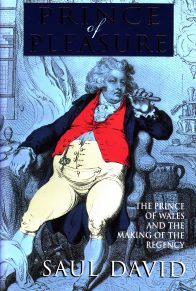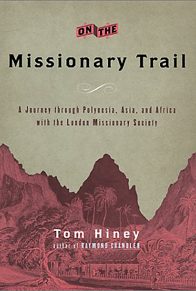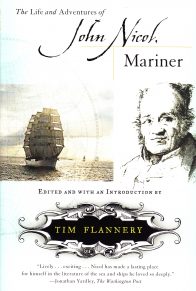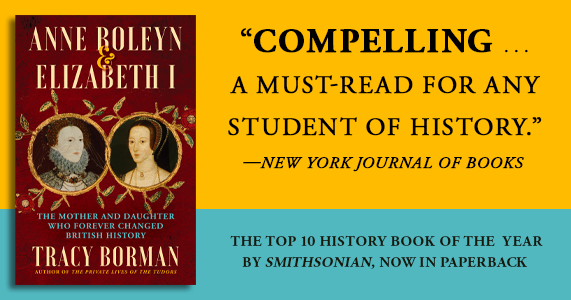Today, from a vantage point on the slopes of the volcano Popocat”petl, all that the modern visitor can normally make out of Mexico City, sixty-five kilometres away on its hinterland of fertile plain, is the muffling cloud of smog. However, on 1 November 1519 the would-be sightseers were foiled by the weather. And it was only on the following morning when the clouds lifted and the sun came out that the Spanish soldiers, gathering on a spot now known as the Paso de Cort’s, became the first Europeans ever to have gazed down on this scene.
Below, just sixteen kilometres away, lay the first in a large high-altitude complex of connecting lakes. Beyond, the Spaniards could make out the outline of a city. A city built on water, the largest city in the Americas and the heart of its most powerful military people, the Mexica. Their new capital was immense. Its 108 districts housed a population of some 225,000, bigger than those of Paris and London combined.
The largest city of which the newly arrived visitors could boast was Seville with 70,000 inhabitants, at most just a third the size of the Mexican capital. Across the whole of Europe only Naples compared. In fact, Tenochtitlan, the name of this American metropolis, stood amongst the greatest artefacts on earth; and when Hernan Cort’s, the Spanish commander gazing down on that morning in November 1519, committed his small army to its conquest, he carried his nation across a historical threshold of momentous importance.
In the half-century before that day Iberian sailors, circling the world’s oceans, had enmeshed the globe with their routes like the tentacles of some fantastically enlarged monster from the deep. Even as Cort’s and his forces entered the outskirts of Tenochtitlan, Ferdinand Magellan, sailing under the Spanish flag, was negotiating the straits at the tip of South America that were to bear his name. And only days after the Spanish arrival in the Mexican capital, the great sailor entered the waters of a vast new ocean, which he named the Pacific, before embarking on the first circumnavigation of the planet.
Yet, in the great Renaissance surge for geographical knowledge, it was not the Spaniards who had best profited from all this activity. It was the small sea-faring nation on their western border, the Portuguese, who had gained most. It was they who had pioneered navigational routes down the west coast of Africa, and one of their countrymen who had rounded its southernmost tip at the Cape of Good Hope. With this discovery in 1488, Bartolomeu Dias had opened up the prospect of an all-water passage to the orient, bypassing the monopoly-holding merchants on the old land routes through Persia, Arabia and Egypt. Oriental luxuries like spices, perfumes, silks, opium, gold and gems could now be acquired at a discount, and the Portuguese lost little time in taking advantage. Within a decade another countryman, Vasco de Gama, had reached India. Another ten years and Alfonso de Albuquerque, taking up his post as governor of Portugal’s oriental possessions, captured Goa on India’s west coast, then Aden at the south-western tip of Arabia. To these he added Malacca, on the Malayan peninsula, the centre of the eastern spice trade. From this one port alone, Albuquerque sent home riches worth $25 million in current values.
While the Portuguese had established immensely profitable routes to the east, the Spaniards had elected to explore in a westerly direction. On the eve of their entry to Tenochtitlan, it still looked as if their choice had been a poor one. Although their transatlantic journeys had uncovered vast territories representing the greatest geographical discoveries by any European nation, for years the driving Spanish ambition was not to locate America, but to capture the same fabled oriental riches that had inspired their Portuguese rivals. Columbus, in his four lengthy journeys wandering the islands of the Caribbean or along the eastern shores of Central and South America, could never quite rid himself of the hope that he had found some outlying region in the empire of the Great Khan, China’s fabled ruler. When it finally dawned on the Spaniards they they had not landed in Asia, but had uncovered two continents of whose existence Europe had not even dreamed, it seemed poor compensation.
By 1516 Portugal’s rapidly expanding trade network embraced Africa’s south-eastern littoral, as well as ports in India, the Malayan peninsula, the Celebes, the Moluccas, Thailand, southern Vietnam and even mainland China herself. The Spaniards, meanwhile, had located varied and richly self-sufficient communities amongst the archipelagos of the Caribbean and on the mainlands of both Americas. At each of these newly encountered localities, they had hoisted the flags of Castile and Aragon. In 1513 one of their explorers, Vasco N””ez de Balboa, hacking his way through the forests of modern-day Panama, had waded into the surf on its (as yet unnamed) Pacific shore and, brandishing his sword, claimed even the ocean in the name of his sovereigns. Despite such gestures, the Spaniards’ genuine rewards for all their enterprise were few.
Gold ornaments had been found amongst the neolithic Arawak of the Caribbean, but the quantities were only moderate and rapidly exhausted. Certainly, Columbus’ effusive claims of great mines of gold in these American islands, or his prophecy that most of the rivers would be found to flow with it, had proved hollow. During all his travels he had made little hard profit to justify even the capital spent on the first and most modest of his expeditions.
Yet in 1516 there were signs that the tide of fortune might have turned in Spain’s direction. Expeditions sent out that year and the following winter, from Cuba to the North American mainland, brought back incontestable proof of cultures far more advanced than anything the Spaniards had previously known. Encountering first the Maya of the Yucatan peninsula and then the Totonacs, a coastal people within the political orbit of the Mexican empire, the explorers were deeply impressed with their large stone buildings, their temples, highly developed agriculture, fine cotton clothing. However, Spanish attention was particularly absorbed in other achievements of these Mesoamerican peoples – the abundance of their gold ornamentation and the high quality of its workmanship. The second expedition returned with precious metals valued at 16,000 pesos. At last Spain seemed to have found potential sources of wealth to rival those of the Portuguese and to justify their costly explorations.
In time, however, the Spanish encounter with the Mexican empire would have a significance far greater than these simple economic benefits. On a purely symbolic level it represented a point of intersection of two communities, whose parallel evolutions had continued in mutual ignorance for thousands of years. At the moment of their convergence, Spain and Mexico had achieved fresh heights in their independent development and were the dominant powers in their respective hemispheres. If it was not the first then it was the most significant confrontation of the Old with the New World.
For Europe to collide in this manner with any civilisation of such radically different orientation is virtually without parallel. In recent history one of the few encounters that bears any resemblance is the British forced entry in 1902 of the Tibetan capital, Lhasa, a place previously seen by only three Europeans. Yet this later meeting on the high plateau of Central Asia was the culmination of decades of intermittent communication. The surprise of final encounter was much more muted, and in the labyrinth of Asian politics the Tibetans were a marginal people. Their confrontation with Europe brought no immediate, radical transformation of Tibetan society. Nor did it initiate a major realignment in the world of human affairs.
In contrast, the wealth and power gained from Mexico – Europe’s first major colonial conquest – would set Spain on a new, dazzling trajectory as the great European superpower of the sixteenth century. At a stroke the Spaniards had cancelled any initial economic lead established by Portugal in its nascent oriental empire. In the Americas, Mexico’s discovery and seizure constituted a pivotal event, propelling the Spanish into a career of headlong conquest. Much of this outburst would be inspired by the fabulous riches that accrued to the new master of Mexico, Hernan Cort’s. The gold and other sources of wealth gained by his victory would change him from a Castilian noble of negligible status into one of the richest princes in the Spanish empire. It was a transformation that captivated not just his compatriots, but the whole Christian world. As one commentator has noted, `Cort’s’ success was the loadstone which drew to the Americas the iron might of Europe.’ Another historian suggested it had an even wider significance: that the manner of his conquest, relying as much on false promises and exploitation of tribal division as on force of arms, `provides us with a model for all subsequent red/white relations in the New World’.
Certainly, within just forty years of Cort’s’ personal triumph, the Spaniards would hold territories spanning thousands of kilometres on both continents. By 1560 they had explored the Pacific coast of North America to a point north of the current California/Oregon state borders. Other expeditions penetrated to the Grand Canyon and along the course of the Mississippi. Parts of Florida were settled. Mexico, most of modern-day Central America, large portions of the contemporary states of Venezuela, Colombia, Ecuador, Peru, Bolivia, Chile, Uruguay and Argentina were all within the Spanish domain. If it was not the largest European empire, it was one of the most rapidly established.
Spain’s victory over the Mexica was the major catalyst for these historical developments, but today it retains a pre-eminence amongst all the examples of European conquest for other reasons. First, it raises, as it did at the time of the events themselves, major questions concerning the morality of such an invasion. In their previous victories in the Caribbean or parts of South America, the conquistadores had been fortified by the idea that they had subjugated rude savages barely one remove from the beasts of the jungle – people presumed to be lacking in the higher ideals of a developed religion, in legal and political organisation, in the arts, in technologies commonplace for Europeans; in fact, lacking in all the refinements of civilised existence.
However, Mexico was a completely different case. Here the Spaniards met a people who could trade with them almost blow for blow in technical and organisational ability. Although retaining some characteristics from their tribal antecedents, the Mexica had carried forward the flame of civilisation that had been burning in Mesoamerica for thousands of years. While Muslim forces had confined tenth-century Christian Spain to a mountainous strip along the northern coastline, the Mexican Valley, through which Cort’s and his men were even now marching, had been home to a flourishing urban society celebrated for its religious innovation, its artistic and architectural achievement.
In November 1519, as the Spaniards advanced on Tenochtitlan’s centre, they could appreciate that the capital’s construction on a huge, brackish lake was immediate and powerful proof of Mexican capabilities. The complex of causeways connecting the city to the mainland, along which the Spanish horses could ride eight abreast, was an outstanding feat of engineering. So too was a sixteen-kilometre dyke that they had erected to prevent flooding. At the city’s outskirts the Spaniards studied the agricultural innovations, especially the chinampas, the irrigated floating gardens – with their orchards, fishponds and intensively managed crops of maize, beans, squash, tomatoes – which ensured year-round produce for Tenochtitlan’s population.
Other striking examples of organisational ability were the city’s public steambaths and the system of ceramic pipes which supplied it with sweet-water fountains. More prosaic, perhaps, but no less impressive was the citywide network of latrines and the organised collection of waste and refuse, which constituted a sanitation system far superior to anything in Europe until the end of the eighteenth century. Even further in advance of any European equivalent were the frequent telpuchcalli and calmecac, the two school systems, which provided a universal education for Mexican children. Finally, at the end of the causeway along which the Spaniards tramped, they would eventually find themselves in a huge plaza – the city’s administrative and cultural heart, holding no fewer than seventy-eight civic buildings, temples and palaces.
Despite the abundant evidence of a civilised existence comparable with the Spaniards’ own, within eighteen months of that famous march the European newcomers had reduced Tenochtitlan’s skyline and much additional evidence of Mexican sophistication to a platform of rubble. They had slaughtered probably half the population. They had reduced the most formidable military force in the Americas to a docile peasantry, notorious amongst Europe’s later generations as the epitome of hopeless lassitude. Of all European confrontations with a tribal people, the Spanish destruction of the Mexica seemed the least morally defensible. Far from advancing the cause of humanity, they had accomplished its opposite, assassinating an entire civilisation in its prime.
Rather than confront the ethical questions that seem to haunt this tale of destruction, the Europeans who perpetrated the deed, and those who inherited its fruits, preferred a different line of inquiry. The question for them was not how such a thing could be justified, but how had it been physically accomplished. For the army that had inflicted such a massive defeat upon the millions of inhabitants of the Mexican empire had never numbered more than 1,500 Europeans at any one time. How could they have won such an impossible victory against such apparently overwhelming odds unless they had received the highest possible support?
Viewed from this angle, all the manifold evidence of Mexican achievement and power ceased to be a moral reproach upon the victors. It became the evidence for Spanish vindication. Like no other tale of imperial conquest, the lightning overthrow and capture of the Mexican empire seemed freighted with proofs of European greatness, the technological mastery and heroism of its soldiery, the preeminence of Christian civilisation. Cort’s’ achievement was passed on to subsequent generations of Spaniards, not as historical evidence for their rapacity, but as a myth substantiating their right to subdue and dispossess tribal society. For four centuries it was a received truth that victory in the teeth of such numerical superiority had been an act of divine justice. Even in our own time, while its theological implications have fallen from view, the conquest has remained evidence of Europe’s invincible superiority. Cort’s, the exemplar of that racial supremacy, was identified by one recent biographer as a Nietzschean Superman. Another British author of a popular work on the conquistadores wrote that `Cort’s, a man who never faltered, never despaired even when the outlook was utterly hopeless, must rank as one of the greatest military leaders in history.’
It is for all these reasons that the Spanish conquest of Mexico remains an event of perpetual fascination and controversy. As an example of Europe’s clash with tribal society it also has one additional importance. Either because pre-Columbian Americans had no written language, or because the process of extermination was completed so quickly, there are few instances in the early European conquests where the events were recorded from the perspective of the defeated. However, in Mexico a number of sources describe the Spanish invasion as it appeared to the vanquished Americans. One of the most important of these was by the sixteenth-century Spanish cleric Bernardino de Sahag”n, who learnt the Mexican language, Nahuatl, and transcribed native eyewitness accounts of the war and its immediate aftermath. Known as the Florentine Codex, it is one of the most important documents on the period, providing rare first-hand insights into how the bearers of European civilisation first appeared to their victims.
Sahag”n’s informants could recall the pervasive atmosphere of dread which oppressed Tenochtitlan as the small Spanish caravan made its way down from the slopes of Popocat”petl and through the Mexican Valley, before its entry through the capital’s gates:
Everyone was greatly terrified. There was terror, astonishment, expressions of distress, feelings of distress. There were consultations. There were formations of groups; there were assemblies of people. There was weeping – there was much weeping, there was weeping for others.
Even then the large Mexican crowds lining each side, as the Spaniards breasted the main causeway of Tenochtitlan, could never have known that in that strange column pushing on relentlessly between them, many were confronted by their own assassins. Before their eyes was passing almost every one of the technological, cultural and biological advantages the Europeans possessed.
Most conspicuous in the Spanish procession were their magnificent horses. Originally brought to Spain by the Arabs of North Africa, these Barb-Arab mounts were then shipped out to the Caribbean where the English explorer, Walter Raleigh, later judged them as the best horses he had ever seen in his life. Cort’s still had about thirteen when he entered the Mexican capital and they made an enormous impression, galloping back and forth, pawing the ground, mouths foaming, their flanks glistening with a sour sheen of sweat. The Spaniards also had huge dogs, wolfhounds or mastiffs, which slobbered and strained at the leash. Each was capable of dispatching a human and trained for the task. The only canid familiar to the residents of Tenochtitlan was a hairless miniature bred for the table, ancestor of the Chihuahua.
The Mexica were initially shocked and mystified by the Spanish cannon – ten culverins and four falconers – assembled from separate short bronze sections and dragged in on wheeled carts, the first wheels to touch American soil. The insistent staccato rhythms of the Florentine Codex capture perfectly their sense of bewilderment at the impact of these strange devices:
… how it resounded as if it thundered when it went off. It indeed bereft one of strength; it shut off one’s ears … Fire went showering forth; sparks went blazing forth. And its smoke smelled very foul; it had a fetid odor which verily wounded the head. And when [the shot] struck a mountain, it were as if it were destroyed, dissolved. And a tree was pulverised; it was as if it vanished; it was as if someone blew it away.
Equally perplexing to the crowds, thirty-two of the Spanish infantrymen carried crossbows while twelve of them shouldered arquebuses, the sixteenth-century muskets whose impact on the Mexica would be as much psychological as physical. Then there was the whole shining panoply of metal weapons and equipment synonymous with European warfare: chainmail, helmets, armpieces, greaves, heavy steel-tipped lances, swords, daggers, knives. Foremost amongst the Spanish weapons were their solid-hiked Toledo swords, famous for their quality throughout Europe. It was a peculiar misfortune of the American people then scrutinising this military caravan that they had developed techniques for working the pliant ores of gold or silver to inflame Spanish greed, but they lacked the necessary metallurgical skill which would have empowered them to meet the steel weaponry of the Spaniards with steel of their own.
The formidable parade of European military technology finally came to a halt before the litter of the Mexican emperor. The two leaders then greeted one another. Cort’s attempted to embrace Moctezuma, but was restrained by the Mexican attendants. Then he placed a necklace of pearls around Moctezuma’s neck, and in return received a string of red shells, adorned with eight shrimps delicately fashioned from gold. When Moctezuma completed his speech of greeting, Cort’s is reported to have said: `Be assured [Moctezuma], have no fear. We love you greatly. Today our hearts are at peace.’
©1998 by Mark Cocker. Reprinted with permission from Grove Atlantic, Inc. All rights reserved.















